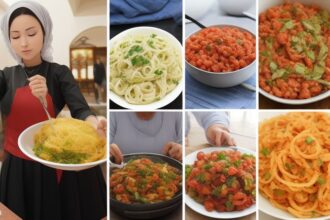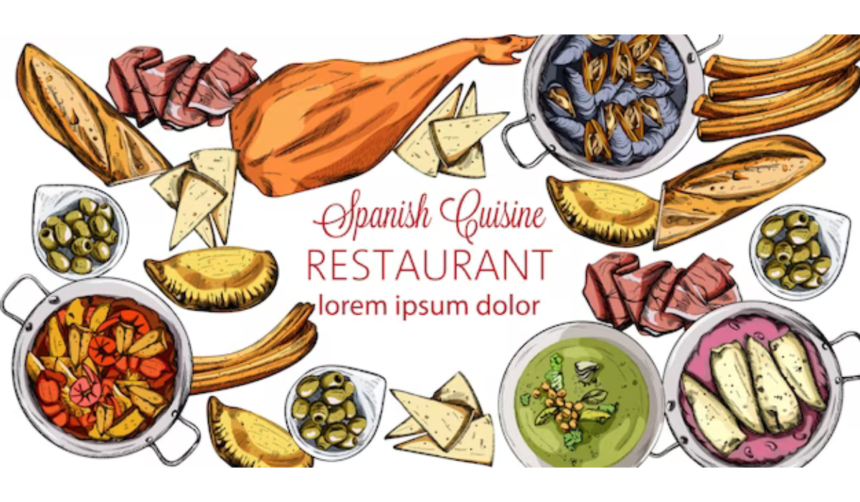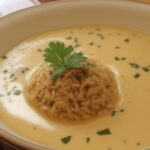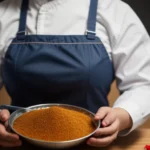Exploring the Rich Flavors of Spanish Cuisine
Spain is widely known for its vibrant culture, stunning architecture, and warm hospitality, but one aspect of the country that often goes overlooked is its incredibly diverse and delicious cuisine. From the bold flavors of paella to the tantalizing tastes of tapas, Spanish food offers a culinary experience like no other. In this article, we will delve into the rich flavors of Spanish cuisine and explore some of the most iconic dishes and ingredients that make this country a food lover’s paradise.
Introduction to Spanish Cuisine
Spanish cuisine is deeply rooted in the country’s history and traditions, with influences from various regions and cultures. The diverse landscape of Spain, with its mountains, coastlines, and plains, has given rise to a wide range of ingredients and culinary traditions that have shaped the country’s unique food culture. From hearty stews and seafood dishes to indulgent desserts and fine wines, there is something for everyone in Spanish cuisine.
1: The Influence of Geography on Spanish Cuisine
The geography of Spain plays a significant role in shaping its cuisine. The country’s varied climate and fertile land produce a wide range of ingredients, from fresh seafood on the coasts to hearty meats and vegetables in the interior. The Mediterranean climate of Spain’s southern regions allows for the cultivation of olives, citrus fruits, and other Mediterranean staples, while the lush pastures of the north provide abundant dairy products and meats.
2: Key Ingredients in Spanish Cuisine
Spain is blessed with a plethora of fresh and flavorful ingredients that form the backbone of its cuisine. Some of the key ingredients in Spanish cooking include olive oil, garlic, tomatoes, peppers, onions, and a variety of herbs and spices. Seafood, such as prawns, squid, and cod, is also a staple in many Spanish dishes, as are meats like pork, lamb, and chicken.
3: The Versatility of Tapas
One of the most beloved aspects of Spanish cuisine is the concept of tapas – small, shareable dishes that are typically served alongside drinks. Tapas can range from simple plates of olives and cheese to more elaborate dishes like patatas bravas (fried potatoes with spicy tomato sauce) and gambas al ajillo (garlic shrimp). Tapas are a great way to sample a variety of flavors and ingredients in one meal, making them a popular choice for social gatherings and casual dining.
4: The Rich History of Paella
Paella is perhaps the most iconic dish in Spanish cuisine, with a history that dates back centuries. This hearty rice dish is typically prepared with a combination of seafood, meats, and vegetables, along with saffron and other spices that give it its distinctive flavor and vibrant color. Paella is traditionally cooked in a large, shallow pan over an open flame, resulting in a crispy layer of rice on the bottom known as socarrat. The dish is often shared among family and friends, making it a centerpiece of many celebratory meals.
5: The Delights of Gazpacho
Gazpacho is a refreshing cold soup that originates from the southern region of Andalusia. Made with ripe tomatoes, cucumbers, peppers, onions, and garlic, gazpacho is a perfect dish for cooling off on a hot summer day. The soup is typically blended until smooth and served chilled, garnished with a drizzle of olive oil and a sprinkle of fresh herbs. Gazpacho is a light and healthy option that showcases the fresh flavors of Spanish vegetables.
6: Exploring the World of Spanish Cheeses
Spain is home to a wide range of delicious cheeses, each with its own unique flavor and texture. Some of the most popular Spanish cheeses include Manchego, a firm sheep’s milk cheese with a nutty flavor, and Cabrales, a sharp and tangy blue cheese from the northern region of Asturias. Other regional favorites include Mahón from the Balearic Islands and Idiazabal from the Basque Country. Spanish cheeses are often enjoyed alongside cured meats, fruits, and nuts as part of a traditional tapas spread.
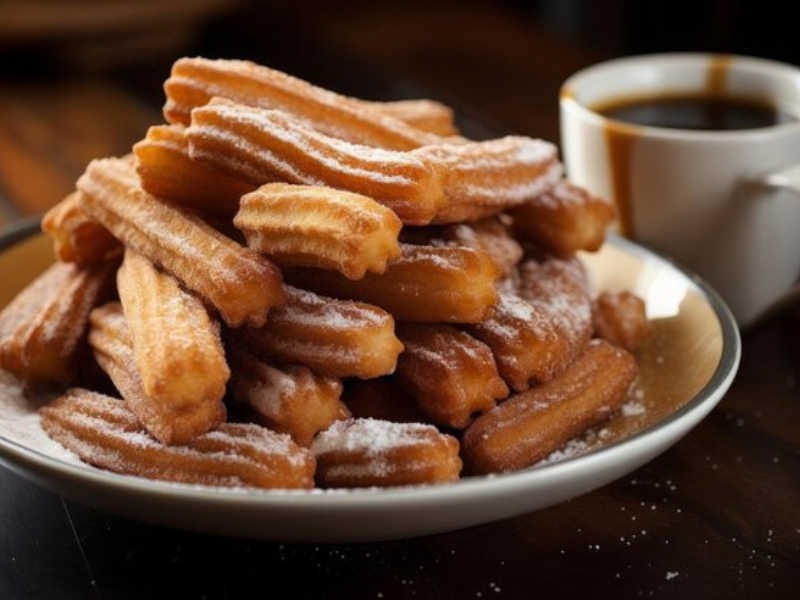
7: The Delights of Spanish Sweets
Spanish cuisine is not just about savory dishes – the country also has a rich tradition of desserts and sweets. From churros dipped in hot chocolate to flan, a creamy caramel custard, there are plenty of indulgent treats to satisfy your sweet tooth. Turrón, a nougat confection made with almonds and honey, is a popular holiday treat, while marzipan, a sweet almond paste, is a staple of special occasions like weddings and festivals.
8: The Art of Spanish Wines
Spain is renowned for its excellent wines, with a long history of winemaking that dates back thousands of years. The country’s diverse climate and terrain produce a wide range of grape varietals, resulting in an impressive selection of reds, whites, and rosés. Some of the most famous Spanish wine regions include Rioja, Ribera del Duero, and Priorat, each known for its distinctive terroir and grape varieties. Whether you prefer a bold and spicy Tempranillo or a crisp and aromatic Albariño, there is a Spanish wine to suit every palate.
9: The Ritual of Spanish Coffee
In Spain, coffee is more than just a morning pick-me-up – it is a social ritual that plays a central role in daily life. Spanish coffee culture revolves around the concept of the café con leche, a milky coffee made with equal parts espresso and steamed milk. This creamy and comforting drink is often enjoyed with a sweet pastry or churros for breakfast or as an afternoon pick-me-up. Spaniards also indulge in cortados, or espresso shots cut with a splash of milk, and carajillos, a spirited coffee cocktail made with liquor.
10: The Tradition of Spanish Vermouth
Vermouth has a long history in Spain, where it is often enjoyed as an aperitif before a meal. Spanish vermouth is typically sweet and aromatic, infused with herbs, spices, and citrus fruits. It is often served over ice with a slice of orange or a twist of lemon, making it a refreshing and elegant drink that is perfect for sipping on a sunny terrace. Vermouth has experienced a resurgence in popularity in recent years, with craft producers creating unique blends that cater to the modern palate.
11: The Importance of Sharing Meals in Spanish Culture
In Spain, sharing meals with family and friends is an integral part of daily life. Whether it’s a leisurely lunch at a neighborhood tapas bar or a festive dinner with loved ones, food is a social occasion that brings people together. Spaniards take great pride in their culinary traditions and enjoy sharing their favorite dishes with others. The act of sharing a meal is seen as a way to connect with others and strengthen bonds, making food an essential part of Spanish culture.
12: The Modernization of Spanish Cuisine
While traditional recipes and dishes remain popular in Spain, the country’s culinary scene is also evolving to embrace modern trends and techniques. Innovative chefs are putting a contemporary spin on classic dishes, incorporating global flavors and cooking styles to create exciting new creations. Molecular gastronomy, fusion cuisine, and farm-to-table dining are all gaining traction in Spain, reflecting a desire for experimentation and creativity in the kitchen.
13: The Future of Spanish Cuisine
As Spain continues to attract visitors from around the world with its rich food culture, the future of Spanish cuisine looks bright. With a renewed focus on sustainability, local sourcing, and innovation, Spanish chefs are poised to lead the way in shaping the global culinary landscape. By honoring tradition while embracing change, Spain is well-positioned to maintain its reputation as a bastion of gastronomic excellence for years to come.
14: Tips for Exploring Spanish Cuisine
If you’re eager to experience the rich flavors of Spanish cuisine for yourself, there are a few tips to keep in mind. Start by seeking out authentic Spanish restaurants and markets where you can sample traditional dishes and ingredients. Be adventurous and try new flavors and dishes that may be unfamiliar to you. Don’t forget to pair your meals with Spanish wines, vermouth, or coffee to enhance the dining experience. And above all, enjoy the process of exploring the diverse and delicious world of Spanish cuisine.
15: Conclusion
In conclusion, Spanish cuisine is a treasure trove of flavors, ingredients, and traditions that offer a truly immersive culinary experience. From the bold and savory flavors of paella to the refreshing simplicity of gazpacho, Spanish food reflects the country’s rich heritage and diverse landscape. Whether you’re savoring tapas in a bustling market or dining on a leisurely feast of seafood and wine, the vibrant flavors of Spain will leave a lasting impression on your palate. So why not embark on a culinary journey through the tantalizing tastes of Spanish cuisine and discover the true essence of this food lover’s paradise. ¡Buen provecho!
FAQs about “Exploring the Rich Flavors of Spanish Cuisine”
- What makes “Exploring the Rich Flavors of Spanish Cuisine” a must-have for culinary enthusiasts? “Exploring the Rich Flavors of Spanish Cuisine” offers a captivating journey through the diverse and vibrant culinary landscape of Spain. Beyond just recipes, it delves into the cultural influences, regional specialties, and rich traditions that define Spanish cuisine, making it an essential guide for anyone eager to explore the flavors of Spain.
- What can readers expect to discover about Spanish cuisine through this book? Readers can expect to uncover the essence of Spanish cuisine, from the iconic dishes of Catalonia to the seafood delights of Galicia. This book delves into the use of spices, the significance of tapas culture, and the influence of Moorish and Mediterranean flavors, offering a comprehensive understanding of what makes Spanish cuisine so unique.
- Are there beginner-friendly recipes included in “Exploring the Rich Flavors of Spanish Cuisine”? Yes, “Exploring the Rich Flavors of Spanish Cuisine” caters to cooks of all skill levels, with a range of recipes suitable for beginners to experienced chefs. Whether you’re learning to make classic dishes like paella and gazpacho or experimenting with traditional tapas, you’ll find clear instructions and helpful tips to guide you through the cooking process.
- How does this book showcase the regional diversity of Spanish cuisine? This book celebrates the regional diversity of Spanish cuisine by highlighting the unique flavors, ingredients, and culinary traditions of different regions. From the hearty stews of Castilla y León to the seafood paellas of Valencia, readers will embark on a culinary journey that explores the rich tapestry of Spain’s gastronomic heritage.
- Can readers expect to gain insights into the cultural and historical influences on Spanish cuisine? Absolutely! “Exploring the Rich Flavors of Spanish Cuisine” delves into the cultural and historical influences that have shaped Spanish culinary traditions over the centuries. Readers will learn about the legacy of Moorish rule, the impact of exploration and trade on Spanish ingredients, and the role of food in Spanish fiestas and celebrations, providing a deeper appreciation for the cultural significance of Spanish cuisine.
Advantages:
- Culinary diversity: Spanish cuisine is known for its rich variety of flavors, ingredients, and regional specialties, offering readers a diverse and vibrant culinary experience.
- Cultural immersion: The title suggests an exploration of Spanish cuisine, providing readers with insights into the culture, history, and regional differences of Spanish cooking.
- Gastronomic adventure: Readers can anticipate embarking on a culinary journey through the rich flavors of Spanish cuisine, discovering classic dishes like paella, tapas, and gazpacho, as well as lesser-known regional specialties.
- Educational value: Exploring Spanish cuisine offers readers the opportunity to learn about the cultural significance of different Spanish dishes, as well as the ingredients, techniques, and traditions that define Spanish cooking.
- Inspiration for cooking: The title may inspire readers to try cooking Spanish dishes at home, providing them with recipes, tips, and techniques to recreate the flavors of Spain in their own kitchens.
Disadvantages:
- Generalization: The term “Spanish cuisine” encompasses a wide range of culinary traditions across different regions of Spain, potentially oversimplifying the diversity within Spanish cooking.
- Lack of specificity: The title does not specify which aspects of Spanish cuisine will be explored or which regions will be covered, potentially leaving readers uncertain about the scope of the content.
- Potential cultural appropriation: Without proper context and respect for the origins of dishes, exploring Spanish cuisine could risk appropriating cultural elements without understanding their significance.
- Accessibility: Some ingredients and cooking techniques in Spanish cuisine may be challenging to find or replicate for readers outside of Spain or major culinary hubs, limiting the practicality of the exploration.
- Dietary restrictions: Spanish cuisine often includes ingredients like pork, seafood, and dairy, which may not be suitable for individuals with dietary restrictions or preferences, potentially alienating some readers.





